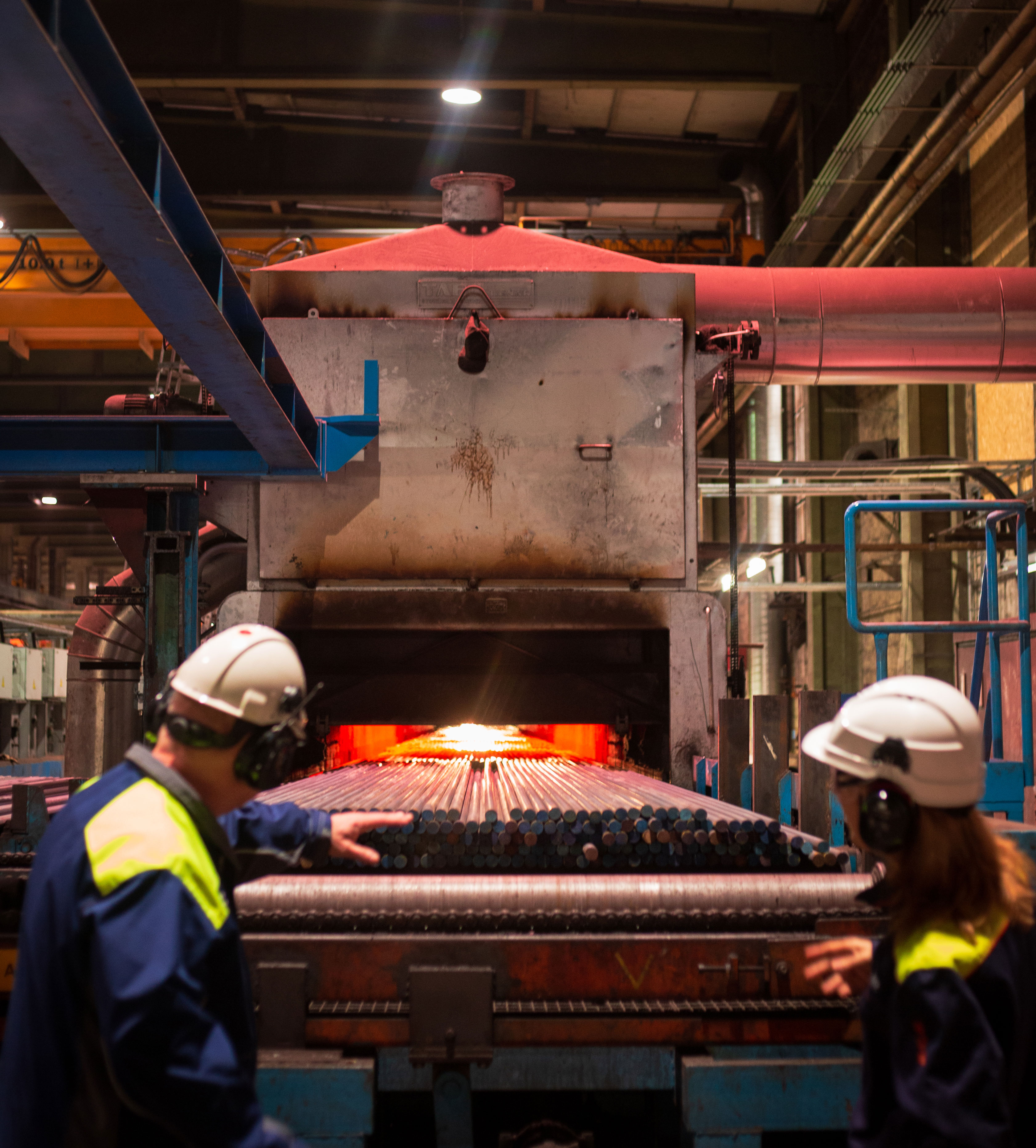
Steel producer Ovako has been electrifying its heating processes for the past decade, making the company a pioneer in the electrification of heating processes. Katarina Kangert, Head of Sustainability and Safety at Ovako, describes the electric conversion as a total success story.
However, when presenting the company’s positive experiences at an EU meeting where most of the European steel producers were represented, she faced skepticism from industry colleagues.
“I was questioned about the truth of the content and accused of ‘fake advertising,’” Kangert says.
Her claim that electric heating in steel manufacturing is more efficient and productive than gas heating seemed like an impossible utopia to many. But, having converted most of Ovako’s heat treatment furnaces since 2012, Kangert and her colleagues have undeniable, unprecedented experience when it comes to using electricity instead of gas in steel production.
Reduced carbon footprint one of many benefits
Zero carbon emissions, zero NOx emissions and energy efficiency are three great benefits.
“There are many benefits,” Kangert says. “Being a sustainability manager, I would say that zero carbon emissions, zero NOx emissions and energy efficiency are three great benefits. The reason we have zero carbon emissions in our continuous lines is because we use fossil-free electricity. That means we have gone from quite high carbon emissions from our heat treatment furnaces to zero.
“Other benefits we’ve had are improved productivity, more stable quality and improved safety. Safety for our operators was a hugely important aspect when we converted from propane and natural gas to electricity.”
Electrification has been an important factor in Ovako’s becoming the steel producer with the lowest carbon emissions in the world, Kangert says.
Electric heating has proved to be more cost efficient
 Electrification of heat treatment furnaces has helped make Ovako the steel producer with the lowest carbon emissions in the world.In general, there really aren't many benefits to using gas instead of electricity in heat treatment processes.
Electrification of heat treatment furnaces has helped make Ovako the steel producer with the lowest carbon emissions in the world.In general, there really aren't many benefits to using gas instead of electricity in heat treatment processes.
“We’re often asked, ‘Isn’t it too expensive to heat with electricity?’” Kangert says. “That’s understandable, since electricity prices have gone up across the globe. However, since the price of propane and natural gas has gone up as well, there really isn’t much difference in terms of price.”
Electrification success story
Ovako embarked on its electrification journey back in 2012 and started to convert from fossil fuels to electricity for its heat treatment furnaces.
“Today, we’ve converted basically all our heat treatment furnaces in Sweden, and we’re on the path of doing the same in Finland,” Kangert says. “The only furnaces left in Sweden are spare furnaces that we hardly ever use. I’d like to point out that this is one of the best projects that we’ve done – it’s a success story!”
Ovako in brief
Ovako develops clean, high-quality engineering steel for customers in the bearing, transport and manufacturing industries. Its steel enables products that are lightweight, resilient and climate smart. With its high sustainability ambitions, its production has been carbon neutral since January 2022 and is based on recycled steel and fossil-free electricity.
Ovako has around 2,900 employees in more than 30 countries and sales of about EUR 1,000 million. Ovako is a subsidiary of Sanyo Special Steel and a member of Nippon Steel Corporation, one of the largest steel producers in the world.
